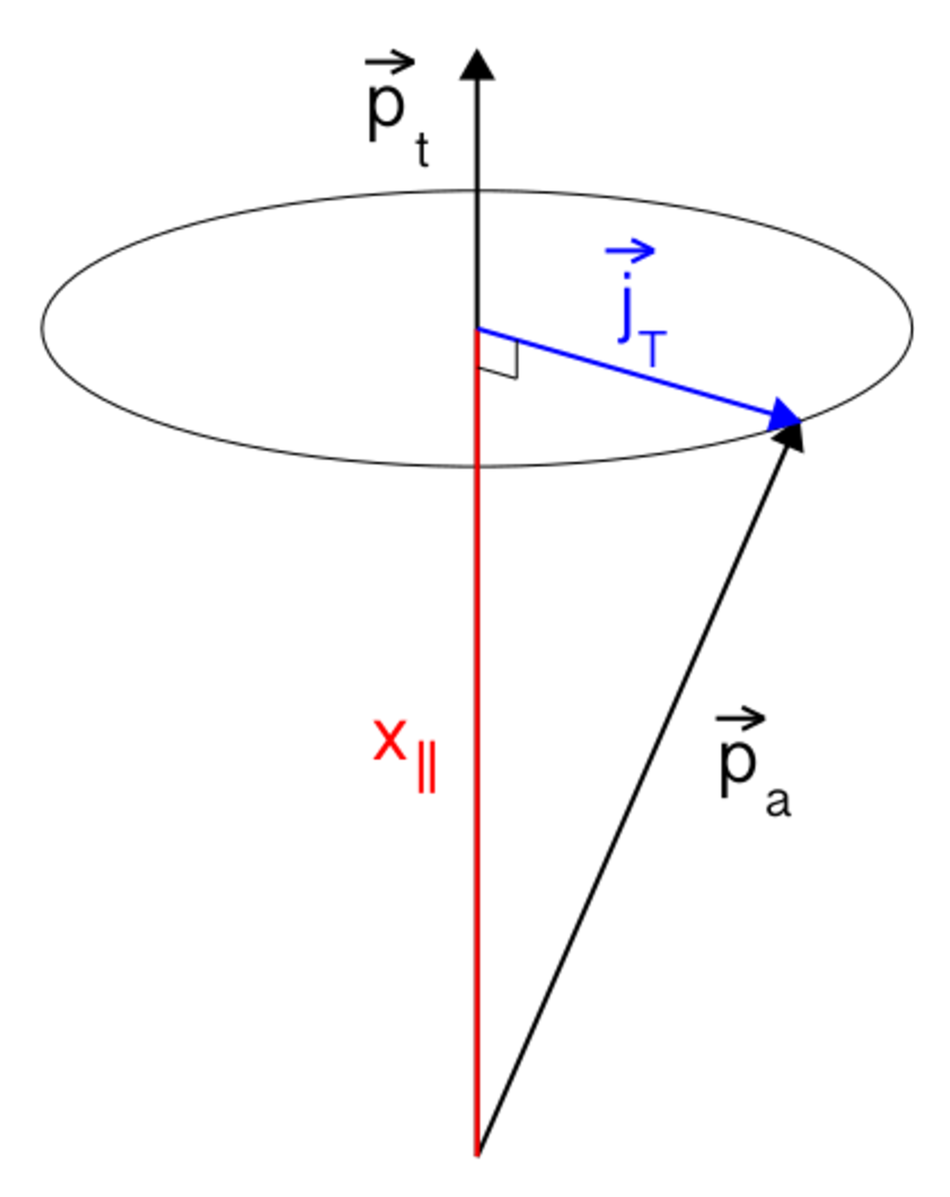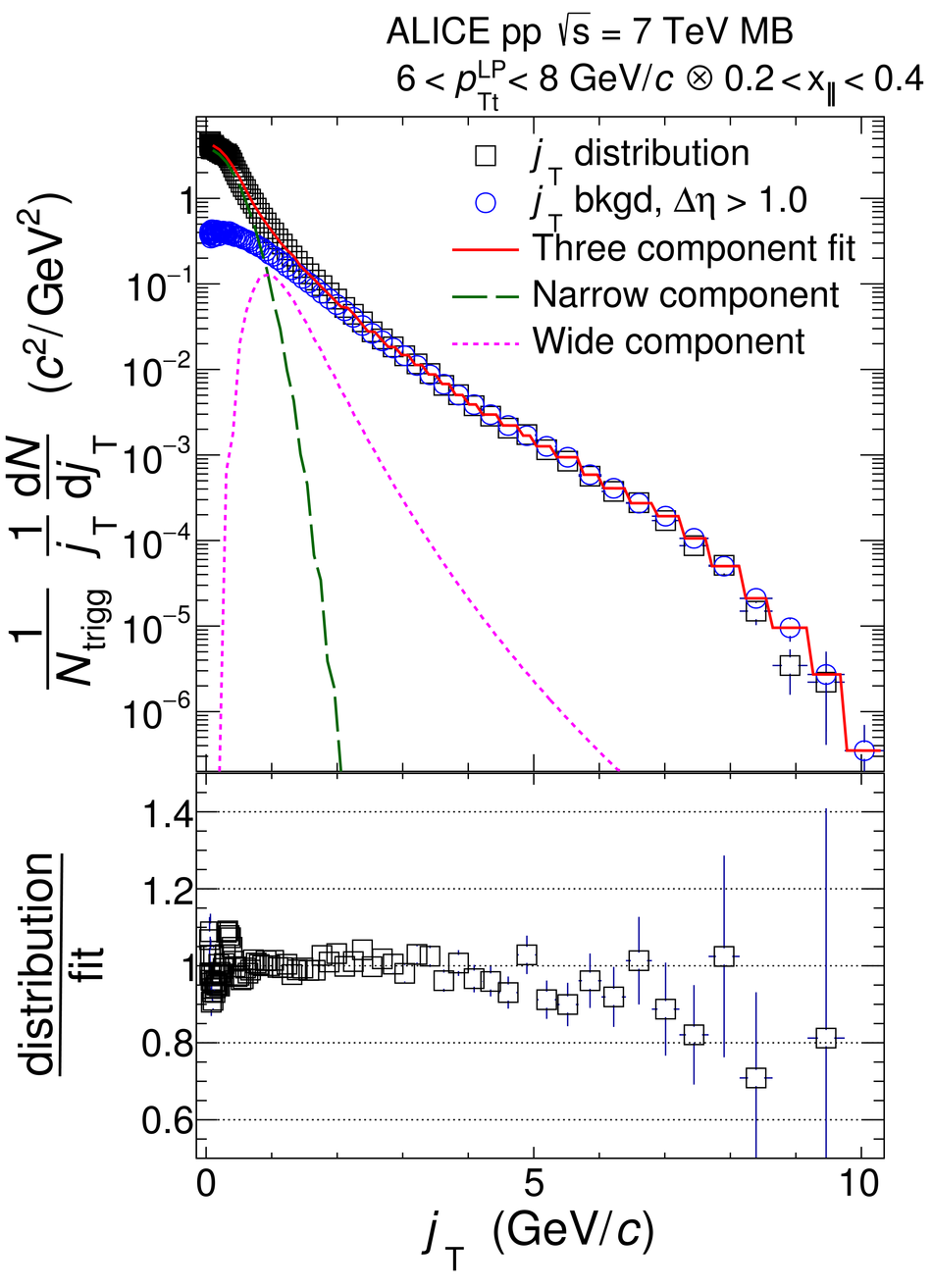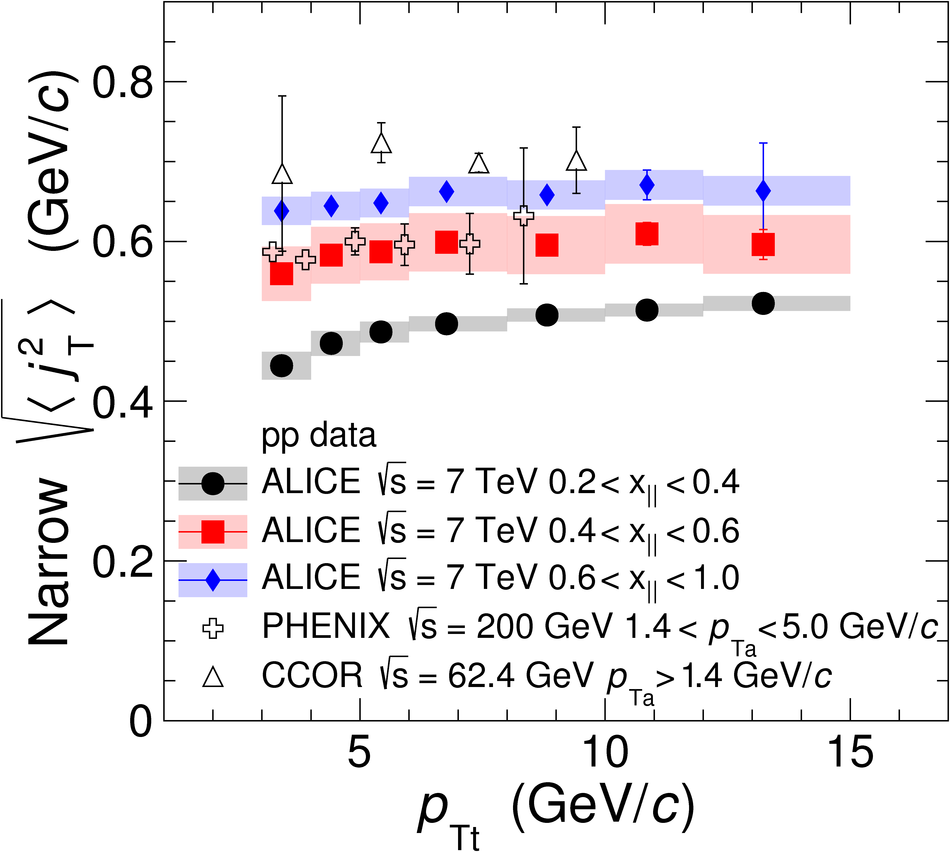The transverse structure of jets was studied via jet fragmentation transverse momentum ($j_{\rm{T}}$) distributions, obtained using two-particle correlations in proton-proton and proton-lead collisions, measured with the ALICE experiment at the LHC. The highest transverse momentum particle in each event is used as the trigger particle and the region $3 <~ p_{\rm{Tt}} <~ 15$ GeV/$c$ is explored in this study. The measured distributions show a clear narrow Gaussian component and a wide non-Gaussian one. Based on Pythia simulations, the narrow component can be related to non-perturbative hadronization and the wide component to quantum chromodynamical splitting. The width of the narrow component shows a weak dependence on the transverse momentum of the trigger particle, in agreement with the expectation of universality of the hadronization process. On the other hand, the width of the wide component shows a rising trend suggesting increased branching for higher transverse momentum. The results obtained in pp collisions at $\sqrt{s}$ = 7 TeV and in p-Pb collisions at $\sqrt{s_{\rm{NN}}}$ = 5.02 TeV are compatible within uncertainties and hence no significant cold nuclear matter effects are observed. The results are compared to previous measurements from CCOR and PHENIX as well as to Pythia 8 and Herwig 7 simulations.
J. High Energ. Phys. (2019) 2019: 169
HEP Data
e-Print: arXiv:1811.09742 | PDF | inSPIRE
CERN-EP-2018-303









